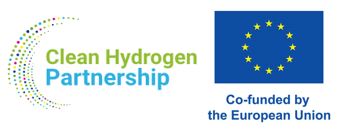LCPME leads WP4 with the goal of optimising the REDHY electrolyser by refining the electrode design for enhanced fluidic management. The objective is to develop electrodes that can handle high current densities while balancing performance and durability.
Taking things to the next level, we are incorporating 3D-printed electrodes featuring engineered flow paths and optimized porous structures. These innovations are designed to improve the electrolyser’s efficiency and longevity. The video showcases the power of Direct Ink Writing (DIW) technology, modified from a standard FDM printer. Watch as the logo is printed using customized graphene oxide (GO) ink, highlighting the versatility of DIW for advanced material deposition.
Behind the Scenes
The focus is on optimising printing parameters for GO inks—carbon-based formulations used in DIW printing that yield prints with excellent properties for the REDHY electrolyzer. This process includes:
- A literature review to identify optimal ink formulations
- Synthesis of inks suitable for printing
- Printing and post-treatment of 2D structures
- Characterisation of the final prints for conductivity, mechanical properties, and electrochemical reactivity
Key Result
Thanks to the modified DIW printer, high-shear carbon-based inks can now be printed. These inks will be used to create electrodes with the necessary properties to meet the REDHY project’s objectives, advancing clean energy solutions.
What’s Next?
The 3D-printed electrodes will play a crucial role in enhancing the performance of the REDHY electrolyser, optimising its efficiency for sustainable hydrogen production.
Impact
Optimising ink formulations and printing parameters paves the way for the fabrication of high-performance electrodes, contributing to the success of the REDHY electrolyser and supporting a greener future.


